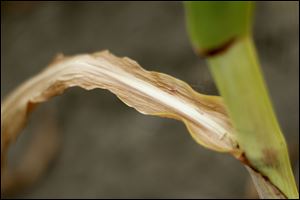
2012 corn crop was 27% below estimates
1/12/2013
Corn farmers harvested 10.78 billion bushels during the 2012 growing season, 27 percent less than the anticipated yield. But the Department of Agriculture said the harvest was still one of the largest in U.S. history, boosted by improved ability to withstand drought.
DES MOINES — The federal government released its final crop report for 2012 on Friday, describing heavy losses caused by the worst drought the United States has experienced since the 1950s.
Much of the attention focused on corn, which is widely used as an ingredient in many foods and as feed for livestock. Farmers produced less than three-fourths of the corn the U.S. Department of Agriculture anticipated when planting was done in the spring. The year-end report shows a harvest of 10.78 billion bushels, 27 percent less than the agency’s initial estimate of 14.8 billion.
The harvest, however, was still one of the largest in U.S. history. Farmers say better crop technology that improved the ability of corn to withstand drought saved them from more devastating losses, and production was helped by the large number of acres planted this year. The department said farmers planted 97.2 million acres of corn, the most since 1937.
Although the drought eventually spread to cover two-thirds of the nation, its impact varied widely from one region of the corn belt to another. In northwest Ohio, results varied even from one county to another.
The U.S. Drought Monitor’s weekly updates have shown few signs the drought is relenting. Sixty percent of the continental United States is still in some form of drought, and climatologists say an absurd amount of snow would be required for conditions to change much during the winter. The best hope, they say, is for heavy spring rains.